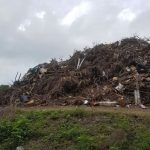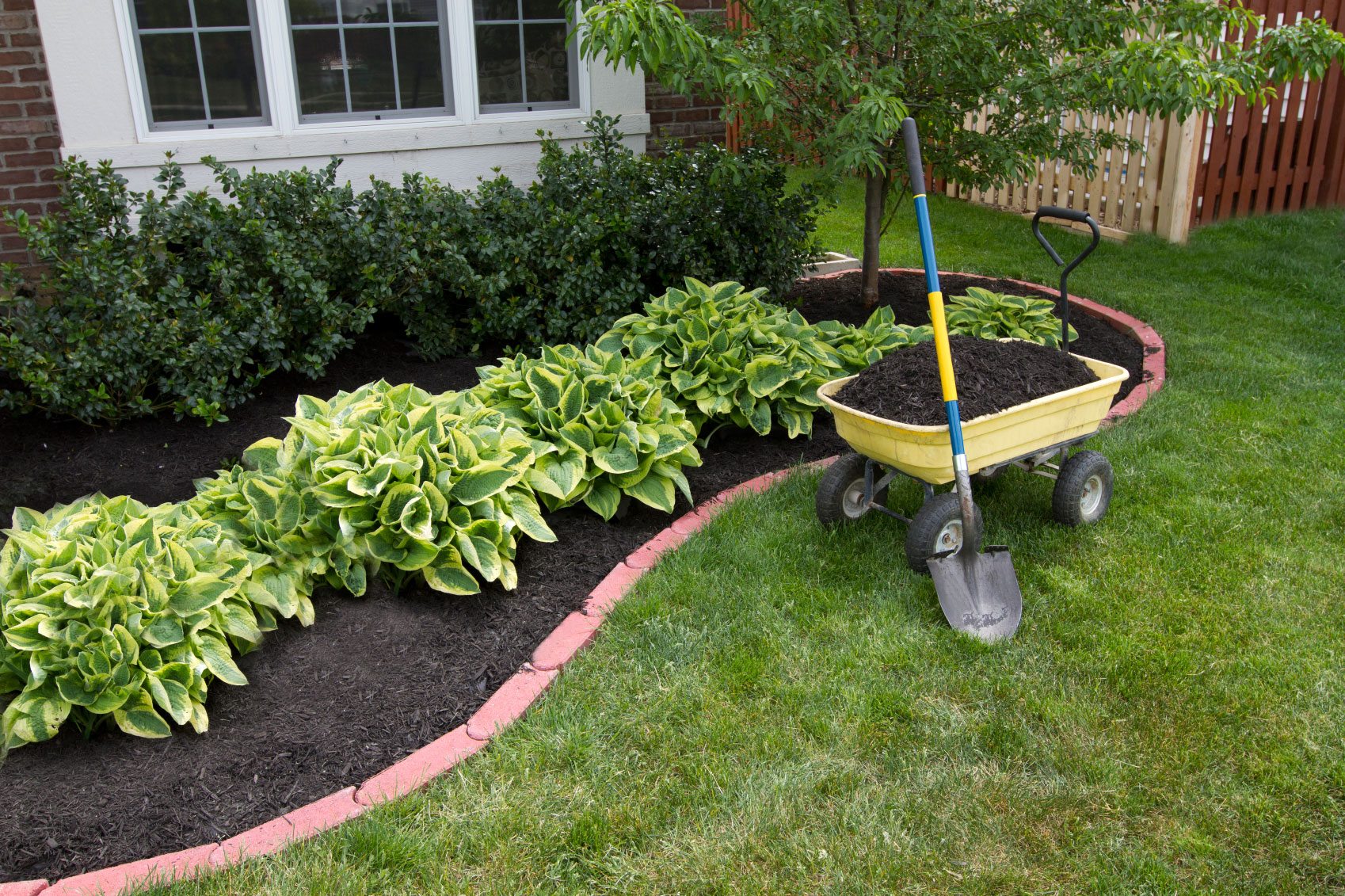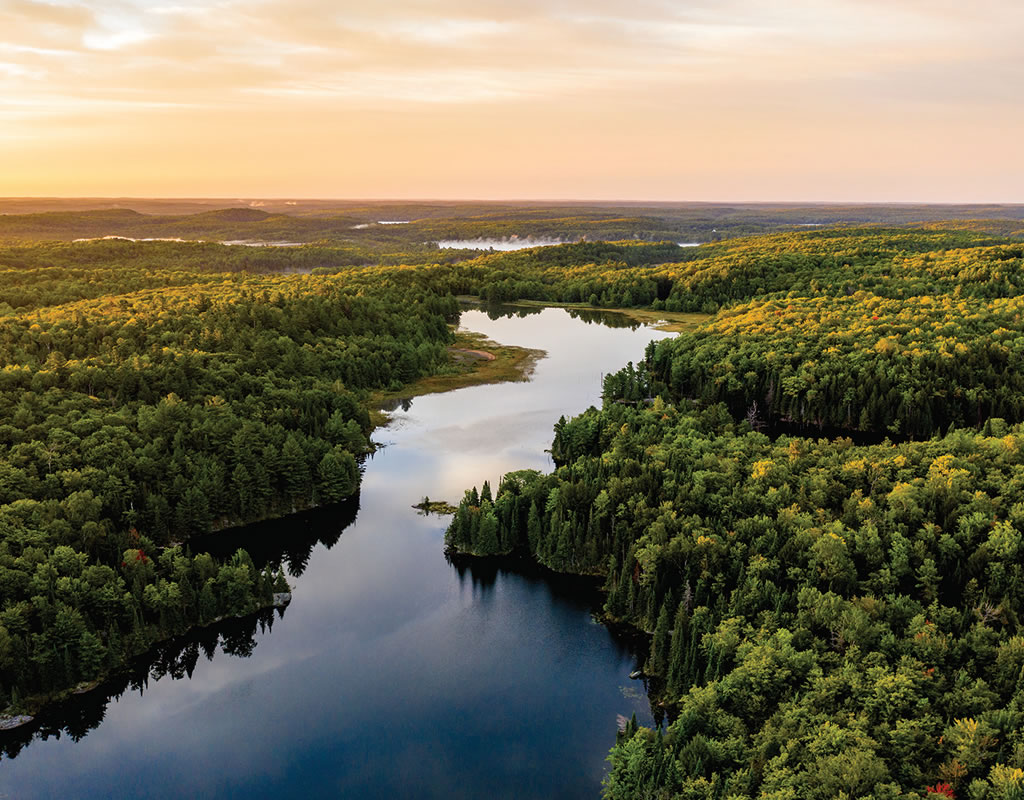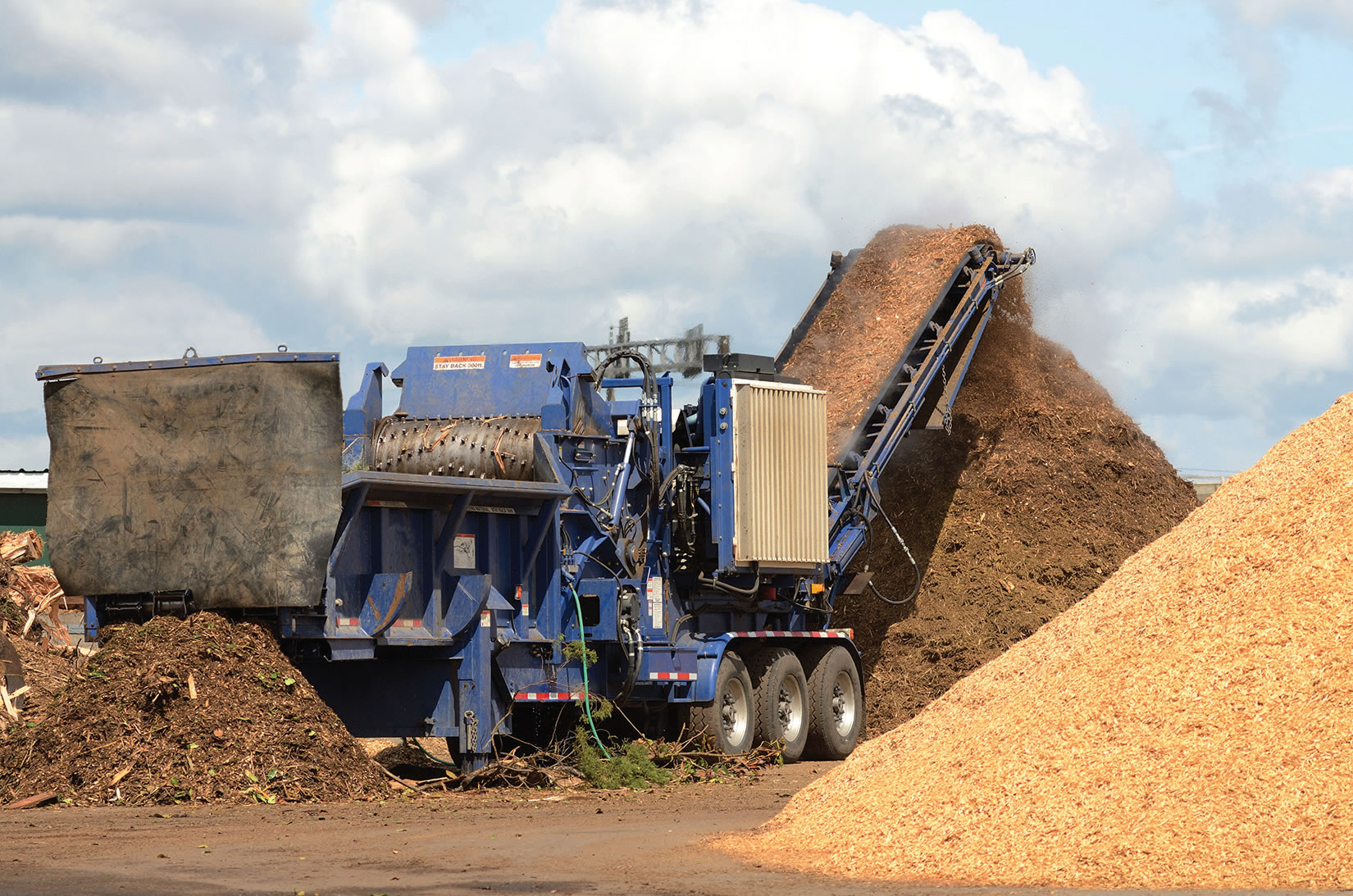By P.J. Heller
Jim Weber knows what it takes to manufacture quality mulch.
So when he became concerned about energy companies competing for raw materials with his Ohio Mulch business, he took action.
“We were concerned that the energy companies were starting to compete against us for raw materials because they were mixing wood fiber in with their coal as they burned it to keep their coal emissions down,” explains Weber, the owner and president of Ohio Mulch headquartered in Columbus, Ohio. “We were concerned that we were going to start losing our raw materials.”
So Weber, whose landscape supply company has been in operation for more than 30 years and has grown to become one of the largest mulch producers in the U.S., decided to create a tree farm, on land he owns in southern Ohio, to serve as a feedstock source for future mulch products.
“My main concern for doing it was that I feared we were going to lose inventory, lose raw materials. This was a way to secure the raw materials and insure that it was available to me (in the future),” he says.
Realizing that it would normally take upwards of 15 years before trees were ready for harvesting, Weber searched for a way to speed up the growing process.
“I wanted trees to grow faster than every 15 years,” he says.
The solution he found was to use biosolids – sewage sludge – as a fertilizer for the hybrid poplar trees he wanted to grow.
“We did some tests and hired outside people [for the study]. Once a tree was planted [in sewage sludge], it would increase production dramatically,” he says.
The U.S. Environmental Protection Agency concurs with those findings.
“Biosolids have been found to promote rapid timber growth, allowing quicker and more efficient harvest of an important natural resource,” the agency says on its website. “Biosolids . . . can be applied as fertilizer to improve and maintain productive soils and stimulate plant growth.”
Trees which Weber is currently growing with the sewage sludge are growing at a rate of up to 4 feet a year, and should be ready to harvest in seven years, he says. Typically, the same tree planted in soil would grow about 1 to 2 feet a year, he says.
Weber found that municipalities regularly disposed of sewage sludge by dumping it in landfills or other disposal sites, incinerating it, or more controversially, land-applying it to grow food crops or animal feed. He put together an RFP for his local municipality and was awarded a contract where he is paid to haul off the sewage sludge.
Although Weber notes that there is still some controversy over land-applying biosolids for food crops, the National Science Foundation reports that “the use of these materials in the production of crops for human consumption, when practiced in accordance with existing federal guidelines and regulations, presents negligible risk to the consumer, crop production and the environment.”
“The nice thing about how we’re using it is it will never be used as a food crop,” Weber says. “It will be used as a renewable resource for us.”
The EPA notes that “after treatment and processing, biosolids can be recycled and applied as fertilizer to improve and maintain productive soils and stimulate plant growth. The controlled land application of biosolids completes a natural cycle in the environment.”
Weber adds that no consideration was ever given to using the trees, grown with the sewage sludge, for use in producing lumber for construction.
“We don’t know what the strength would be since it was growing so fast,” he says. “But it’s perfect for making mulch and coloring it red and gold. When you grind the tree up and then dye it red or gold, the colors are nice and bright and they just pop.”
Weber spent two years researching the idea of using biosolids to grow the trees, obtaining EPA approval and overcoming some local opposition. The property is in a rural area on an old coal mining excavation (spoil piles) site.
“We do testing on a regular basis, where we test the inflow of water that comes onto the property and then test the water that leaves our property,” he says. “The water that leaves our property is cleaner than the water that enters our property.”
Weber’s tree plantation was started four years ago and spans over 1,012 acres. Trenches about 4 feet wide and 4 feet deep were dug, then filled with about 3 feet of sewage sludge and a foot of dirt before the trees were planted. Some 85,000 trees have been planted so far, including 25,000 last Fall. Another 40,000 trees are expected to be planted this year.
The goal is to harvest the trees every seven years, harvesting about 150 acres each year and planting 150 acres each year. “We’re not at the point where we’re consuming 150 acres a year,” Weber says. “We haven’t had our first rotation yet, but we’ve had great success growing trees.”
Weber believe he is a pioneer in the industry growing trees with sewage sludge for commercial mulch production and says the success of his operation can easily be duplicated by other mulch manufacturers.
“What I’m doing in Ohio could be done in other states and municipalities to support the mulch industry,” he says. “It’s something that could be done anywhere trees grow naturally. I don’t see a reason why you couldn’t use the same method with other trees, such as pine.”
Weber says he has no plans to expand the growing concept to other areas.
“I think I’ve got my hands full in Ohio. But if someone asked me in another part of the country, I would give them whatever advice I could,” he says.
Weber’s business operations include 24 landscape supply centers (retail stores) and production facilities in Georgia, Kentucky, and in the Ohio cities of Dayton, Cincinnati and Columbus that manufacture high-quality mulch. The company employs about 150 people.
Ohio Mulch sells bagged and bulk products primarily throughout the Midwest with its offering found in big box stores, hardware and grocery stores and garden supply centers. Its products are certified by the national Mulch and Soil Council.
In Georgia, Ohio Mulch manufactures cypress, pine, and cedar mulch and has those products shipped via rail-car to Ohio. The company is not growing its own trees there, rather it buys wood on the open market and also has its own logging crews to harvest timber when contracted by a landowner.
The company also operates a sawmill in Georgia, which turns older trees into fencing, siding, interior panels and trim. “I didn’t want to take a 25 or 30 year old or older tree and turn it into a one-year product,” Weber says. “I personally wanted to feel good about a tree that’s grown for 30 years, by making something out of it besides a one-year product. We’re making a long life product out of it, a 25 to 30 year product . . . then we take the scrap from the sawmill and grind it up and make mulch.”
Weber started in the industry with a small retail store in Blacklick, Ohio, when he was 19 years old, after running a lawn service business out of his parents’ garage. “I never had an idea it would grow to be this big,” he admits.
“We’ve been in business 33 years. I just think the landscape industry as a whole has been somewhat recession proof. A weak economy doesn’t have much of an impact on the industry, unlike the new housing market,” he says. “The mulch side is more of a maintenance side of the industry, while planting bushes, shrubs or trees might be more closely tied to the new housing market. The mulch side of the business is an easy way for homeowners to feel good about taking care of their homes and fixing them up.”
Related News
Subscribe Today
Every other month, Soil & Mulch Producer
News brings you important stories about:
• New Technology
• Products
• Industry News
• Research Studies
Soil & Mulch Producer News features articles and services relevant to your daily operations.











